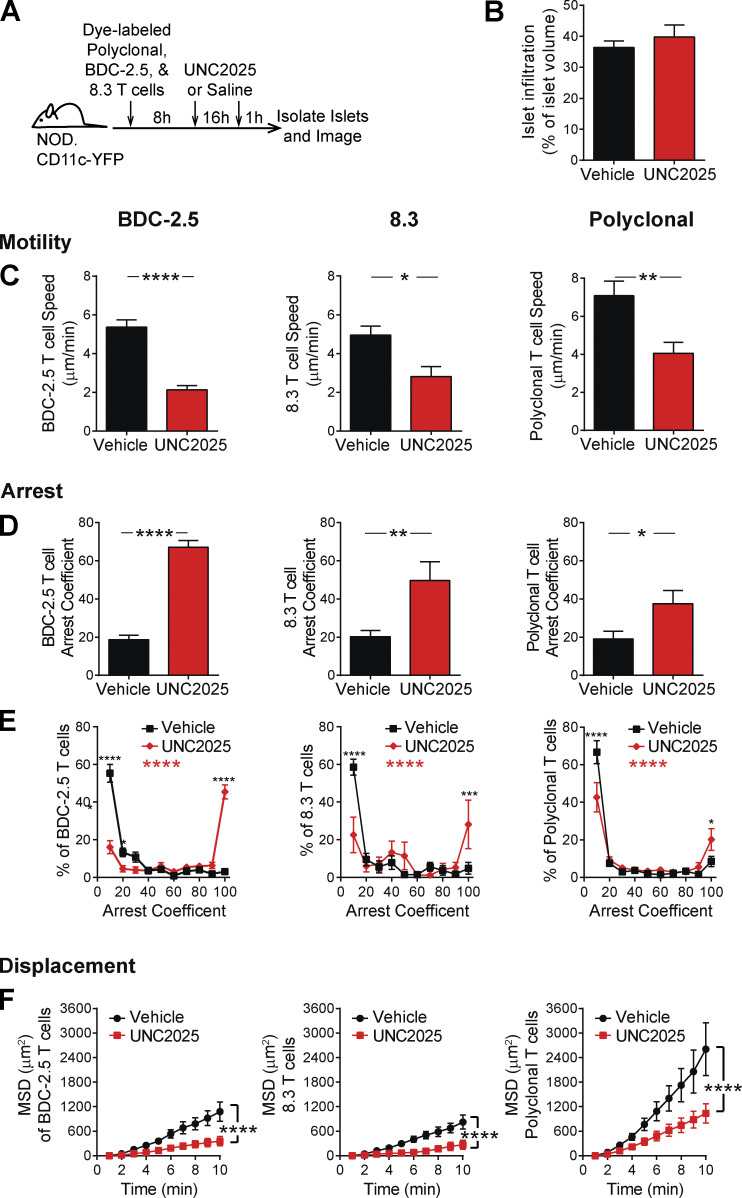Figure 4.
MERTK signaling drives antigen-independent suppression of T cell arrest in islets. Activated 8.3 CD8 T cells, BDC-2.5 CD4 T cells, and polyclonal T cells were fluorescently labeled and cotransferred into female NOD.CD11c-YFP mice. Mice were treated twice daily with saline vehicle or 30 mg/kg UNC2025, a small-molecule inhibitor of MERTK and Flt3. 17 h following the initial treatment, islets were isolated and analyzed by two-photon microscopy. (A) Schematic of experimental setup. (B) Average level of islet infiltration. (C) Average T cell crawling speed per islet. (D and E) Arrest coefficient: percentage of time that a cell crawls <1.5 µm/min, averaged per islet. (F) MSD over time indicates the T cells’ ability to translocate away from their place of origin, averaged per islet. (A–F) n = 17 islets from vehicle-treated mice containing 590 analyzed BDC-2.5 T cells, 182 analyzed 8.3 T cells, and 497 analyzed polyclonal T cells. n = 8–11 islets from UNC2025 treated mice containing 481 analyzed BDC-2.5 T cells, 49 analyzed 8.3 T cells, and 671 analyzed polyclonal T cells. Data were derived from two or three independent experiments. (B–D) Statistics: two-tailed Student’s t test. Error bars represent SEM. (E and F) Statistics: two-way ANOVA with Bonferroni’s multiple comparison test, treatment effect (black statistic), interaction effect (red statistic); *, P < 0.05; **, P < 0.01; ***, P < 0.001; ****, P < 0.0001. Error bars represent SEM.

